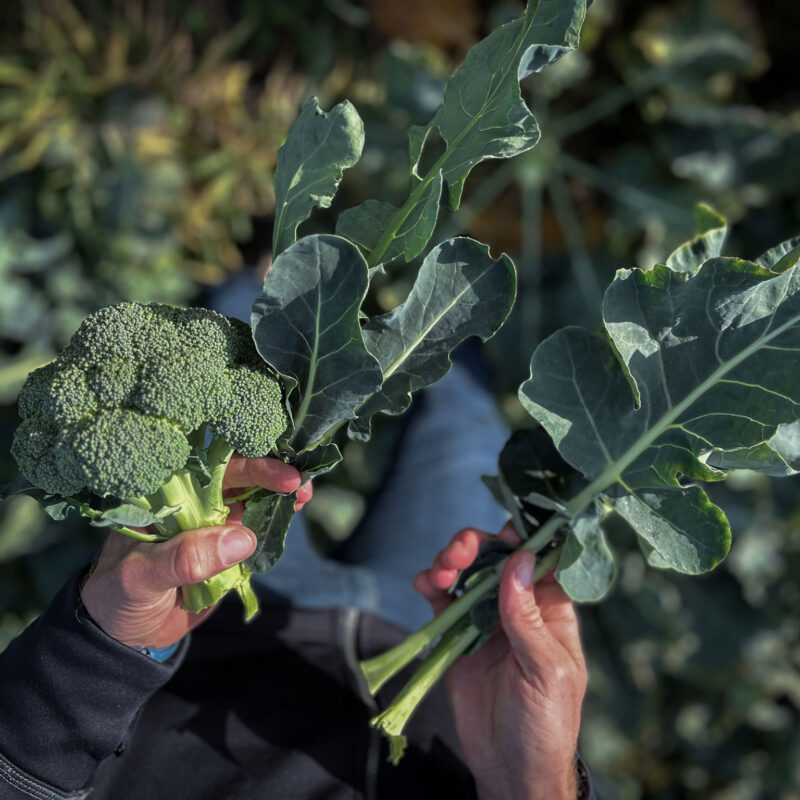Material Dialogues – How much material do you get for 1 kg CO2e?
Materials can contribute significantly to a product’s CO2e emissions. With the Material Dialogues, Axfoundation aims to spur conversation about the impact of the choices we make. The concept answers the question, “How much material do you get for 1 kg CO2e?”, serving as a tool for comparing materials and highlighting the benefits of choosing more sustainable materials.

Material Dialogues illustrates the climate impact of common materials by showcasing how much of …

… a certain material can be produced to generate one kilogram of carbon dioxide equivalents.
Background
The concept and exhibition Material Dialogues was created by Emma Olbers, a Swedish designer and sustainability strategist. It was initially developed in collaboration with Sally/EY Doberman and has been further developed in collaboration with Axfoundation in 2025.
The science-based climate impact data featured in the concept is derived from the software platform Variable. The data refers to ’cradle to gate’, meaning it covers the process from the extraction of raw materials to the point the product leaves the manufacturing facility.
About Material Dialogues
Material Dialogues illustrates the climate impact of common materials by showcasing how much of a certain material needs to be produced to generate one kilogram of carbon dioxide equivalents.
It is nevertheless essential to recognize that material production also affects other environmental processes, such as water usage, biodiversity, and land use, which are not covered in this concept. Also, a product’s overall negative and positive impact on nature and humans is determined by its full lifecycle or lifecycles.

Six of the planetary boundaries have been exceeded, climate change being one of them. Credit: Stockholm Resilience Centre, created by Azote based on analysis in Richardson et al 2023.
Materials impact more than the climate
Climate change is just one of many environmental issues related to how we produce and use materials. According to science, there are nine planetary boundaries that outline a safe operating space for humanity.
Currently, six of these boundaries have been exceeded, which could lead to sudden and irreversible changes in our environment. Therefore, when choosing materials, it’s essential to think about their effects on other environmental factors as well, not just climate change.

Virgin aluminium vs. recycled aluminium by Hydro CIRCAL.

Virgin polypropylene vs. recycled polypropylene vs. cellulose composit from kraft paper by PaperShell.

Virgin polyamid vs. recycled polyamid from discarded fishing nets by Circular Ocean.

Steel produced with fossil fueled energy vs. SSAB Fossil-free™ steel, produced with HYBRIT® technology.
It’s time for a material shift
The ever-increasing consumption of resources and materials is the primary driver behind climate change and many other environmental issues. Over the past 50 years, material consumption has tripled. Without swift and concrete solutions for the sustainable use of natural resources, material consumption could increase by another 60% by 2060.
Today’s material consumption primarily relies on finite, fossil-based raw materials and unsustainable global value chains. To reduce the impact of materials, Axfoundation runs initiatives to turn residuals and waste into valuable resources and to promote the use of local, underutilized, and biobased materials.
It’s time for a radical material shift – where we make use of everything produced in a regenerative, renewable, and circular way.
– Amelie Silfverstolpe, Project Manager for Future Materials at Axfoundation.
Waste: a design flaw
Even though creating materials and products consumes a lot of resources and can harm the environment and climate, waste remains a fundamental part of our economy. To truly reduce the impact of our materials, we need to do more than just select better options; we must fully utilize all resources, including residuals and waste. This means we should view waste as a design flaw, and moreover, we should recognize the value of residuals as a business opportunity.

Virgin cotton fabric vs. recycled cotton fabric.

Leather (based on global market avarage) vs. woven rattan.

Chip board vs. chip board from recycled packaging by Recoma.
Decoupling business and material consumption
Using better materials alone won’t fix the climate crisis we’re facing. Frankly, we must consume less. By shifting from a linear economy, where we take, make, and waste, to a circular economy that keeps materials and products in use for as long as possible, we could cut carbon emissions in half. People’s needs could be met, using only one-third of the materials currently consumed. Let’s aim to slow down the throughput of materials in our economy and decouple material consumption from economic growth.
In the Future Materials program, Axfoundation hopes to support local material resilience and minimize supply chain vulnerability. The Material Dialogues is one way to spur conversation about it.
– Hanna Hobohm Skoog, Program Director for Future Materials at Axfoundation.








































